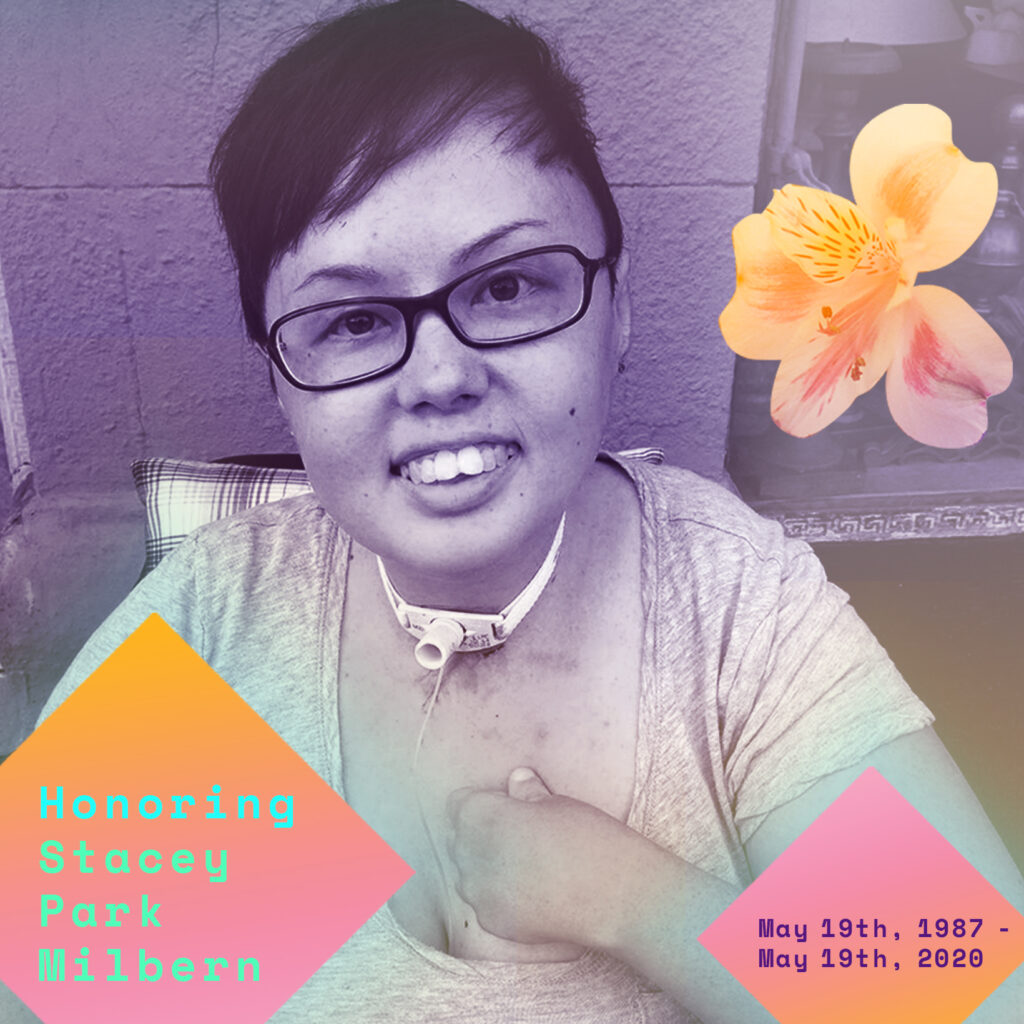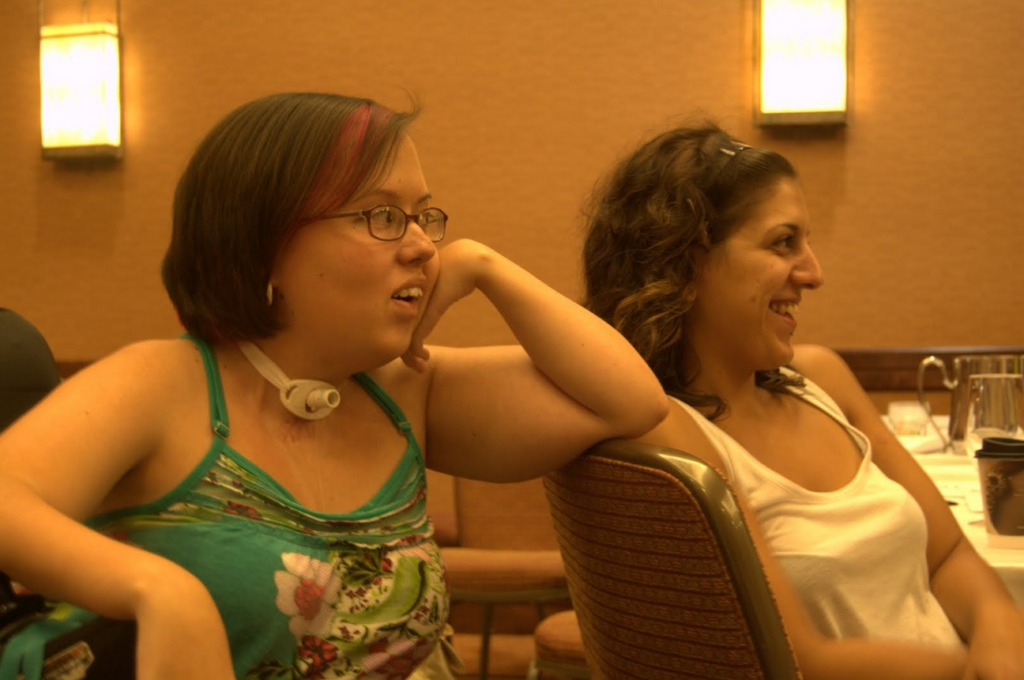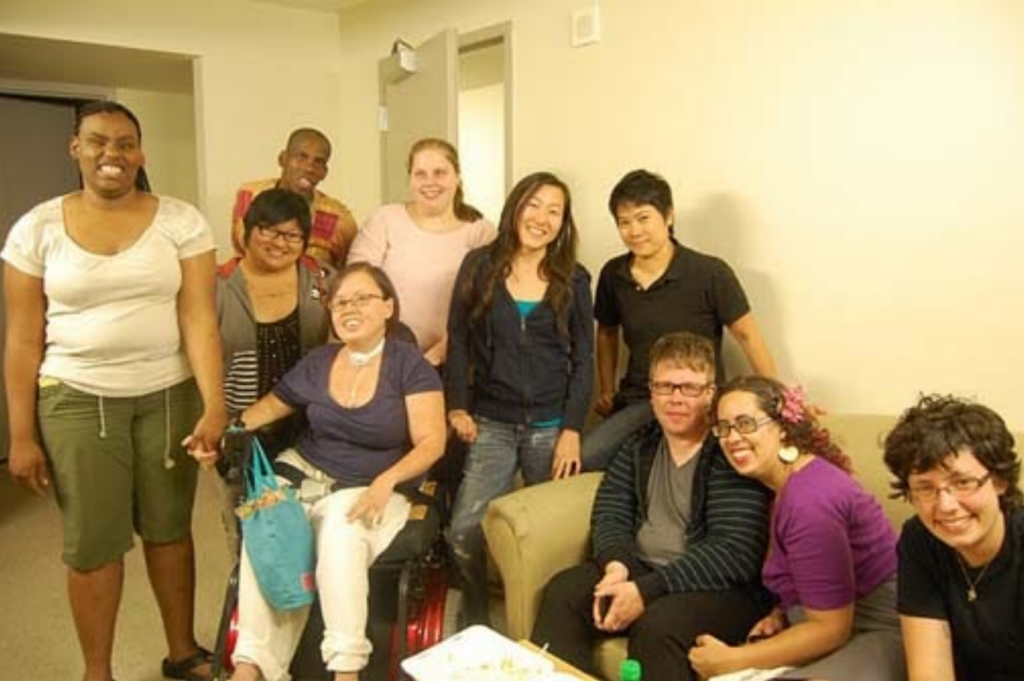In Loving Memory of Stacey Park Milbern

The Allied Media Conference Community is among the vast number of people grieving the transition of Stacey Park Milbern to the ancestor realm on May 19th, 2020, which was also her 33rd birthday.
Most recently, Stacey was living in Oakland, working as one of two impact producers for the Netflix documentary Crip Camp. She was organizing mutual aid networks for people with disabilities who were impacted by utility shutoffs and wildfires in the region, demanding a disability justice analysis in the way we think about climate catastrophe. Read Alice Wong’s powerful tribute for more about Stacey’s legacy of ideas and organizing.
Stacey profoundly shaped the Allied Media Conference between 2007 and 2012 — a time when the AMC was reinventing itself. It was an early chrysalis, establishing roots in Detroit after seven years of being based in Bowling Green, OH. During this time, we transitioned leadership from the conference’s founders to a new group of Detroit-based organizers, and fundamentally shifted who the conference was for, to center the participation of youth, Detroiters, queer and trans people, Black, Brown, and Indigenous people, disabled people, parents, and caretakers.
Stacey was a leader in this transformational time of the AMC. She entered the AMC universe through her involvement with the Radical Women of Color Bloggers Network, which later became the SPEAK! Radical Women of Color Media Collective. Nadia Abou-Karr, an AMC staff person and member of SPEAK!, built a bridge for this community into the AMC, ultimately creating one of the earliest AMC “Tracks” (back when the AMC had 4 tracks, not 30). Stacey served on an advisory team for the first INCITE! Radical Women of Color Media Track in 2007 and steadily deepened her involvement from that point forward.

With each year, she brought more people into the AMC, especially disabled queer people of color and young people who were hungry for a political home that honored all parts of their identities. Stacey created that home within the AMC. She was the ultimate facilitative leader, constantly carving out space for other people to not only attend the conference, but to lead. In 2011, the first disability-focused track of the conference, Disability Justice: Creating Wholeness was coordinated by young people that Stacey mentored (while also a young person herself).
While she was creating this powerful, protected space within the AMC where a disability justice politic and community could grow, she and other disability justice leaders were also teaching the conference as a whole about accessibility. #StaceyTaughtUs specific things, like providing a dedicated wheelchair accessible minivan throughout the weekend, swapping out campus soap dispensers for scent-free Dr. Bronners, and leading webinars for presenters on how to make their content accessible for multiple learning styles.
In those days, these simple things felt groundbreaking, because most national conferences were unable or unwilling to do them. Her work with others to establish Creating Collective Access — a Disability Justice network to help disabled people attend, experience, and shape the AMC — informed many other projects, including the now widely-adopted pod theory and her own interdependent move to the Bay area from North Carolina. She continued her transformative work, sharing disability justice with the Radical Monarchs, again, before AMC understood its own connection to chrysalis.

The AMC remains imperfect when it comes to access, and in some ways, that may always be the case. What #StaceyTaughtUs is that we’re never “done” creating the world we need. At our best, we are always in an ongoing collective effort of transforming ourselves and our communities. This requires deeply attuned listening to the people for whom things are not working, the people on the edges of the room, or those who are not yet even in the room. It requires a shift in power — from asking for things, to having the power and resources within a space to create what you need and desire. And it requires holding, with care, the balance between protected, autonomous space and participation in a larger, complex, and messy whole.
Stacey presumed her power to make the AMC what she needed it to be and in doing so, she helped define the distributed leadership model of the conference. While there have always been core AMC staff, leaders like #StaceyTaughtUs that our role is more like earthworms than farmers. Our job is to cultivate fertile soil in which transformative work can grow. Stacey made the soil of the AMC so much richer through her involvement and showed us how beautiful a wild ecosystem, rooted in care and access, could be. We are forever grateful for you, Stacey.
More:
- Crip Camp, the official virtual experience, a project Stacey was co-leading with Andréa LaVant
- Stacey and Leah Lakshmi Piepzna-Samarasinha talk about Disability Justice at the 2010 AMC
- Reflections on the Creating Collective Access initiative
